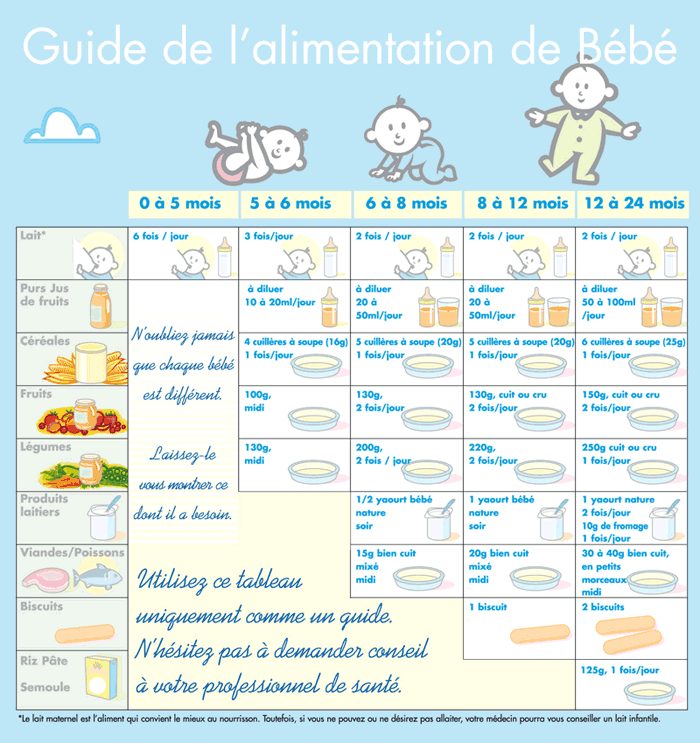2 yr old baby food chart
Healthy Foods for 2 Year Old Child Along with Recipes
Food habits change rapidly as your infant grows. Within the first two years, your baby will have begun teething, moved on to solid foods, and more or less integrated with family mealtimes. Here is a food chart, as well as some recipes on how to integrate healthy eating habits in your child and include good, wholesome and nutritious food in his diet.
How Does Your Toddler’s Meal Time Change?
Your child will have begun eating solid foods as he starts teething. Kids this age are impatient and even fussy around mealtimes. At one and a half years (18 months), toddlers usually manage to handle a spoon to feed themselves. By 24 months, your child will have joined the grown-ups table as a regular!
Some Useful Steps to Form Good Eating Habits in Your Child
A toddler’s eating habits and tastes are only being established as he first starts eating solid foods. This is the time when parents should strive to build a healthy eating habit.
- Delay your child’s introduction to fast food and sweetened aerated drinks, and help build a preference for fresh, wholesome food.
- Stick to strict meal timings. Establishing a routine will lead to your child developing a fixed mealtime by getting hungry at the right time.
- Do not feed your child heavy snacks or lots of liquid rights before mealtime.
- Each meal should last for 20 minutes and no longer.
Food for a 2-Year-Old Baby
While a balanced diet is essential for us, children need a boost of nourishment that helps them grow.
1. Dairy Products
Milk, yoghurt, and paneer are all rich in calcium. Calcium helps build strong bones. In case your child is lactose intolerant, he may need to take calcium from other sources like nuts and pulses to make up for a gap in the calcium intake.
2. Chicken
Chicken and other non-vegetarian foods contain good quantities of easily absorbable iron and protein. Iron helps power haemoglobin in the blood and prevents anaemia. Iron found in vegetarian food is harder for the body to absorb and, hence, your child will need to consume at least twice as much of it to get the required amount.
Iron found in vegetarian food is harder for the body to absorb and, hence, your child will need to consume at least twice as much of it to get the required amount.
3. Fish
Fish is a good source of Essential Fatty Acids (EFAs). EFAs help builds immunity and strengthens the cardiovascular system. Vegetarians will need proper substitution of EFA sources, as it is not produced in the body and can only be gained externally.
4. Healthy Oils
Flaxseeds, walnuts, soybeans, and other nuts and their oil contain reasonable amounts of EFAs and minerals.
5. Carrots
Carrots are famous as a rich source of Vitamin A. Spinach, kale, and other vegetables also contain high levels of Vitamin A. It is essential to include foods rich in different vitamins in your child’s diet. Vitamin A helps in boosting eyesight and immunity.
6. Citrus Fruits
Lemons and oranges are renowned for their Vitamin C content. Deficiency of Vitamin C can lead to serious diseases like scurvy. Vitamin C helps in strengthening gums and blood vessels and recovering from bruises. Guavas, mangos, bananas, tomatoes, and spinach also contain Vitamin C.
Vitamin C helps in strengthening gums and blood vessels and recovering from bruises. Guavas, mangos, bananas, tomatoes, and spinach also contain Vitamin C.
7. Sunshine
Although this isn’t technically a food, it is something the body absorbs. Hence, it is included in this list, considering the integral role it plays in growth. The element we gain from sunshine is Vitamin D. Vitamin D is essential for a child to achieve his maximum growth potential. Foods that contain Vitamin D are fish and dairy products.
8. Bananas
Magnesium and potassium, are essential elements for cardiac health, and muscle condition, and are found in bananas. Incorporate this beneficial fruit into cereals and other foods to make it a staple.
Food Chart/Schedule for 2-Year-Old Baby
| Breakfast | Mid Morning | Lunch | Afternoon | Dinner | |
| Sunday | Poha/Upma with vegetables/ sprouts/ peanuts and milk/ curd | Cup of milk and fruits | Curry made with any pulses or rice and dahi | Paneer cutlet with milk | Aloo matar with missi roti |
| Monday | Dosa or Moong dal cheela with added vegetables and curd | Seasonal Fruits | Mixed vegetables curry with chapatti | Fruit milkshake | Chapatti with fried soya chunks |
| Tuesday | Egg roll in roti or egg rice | Vegetable soup / fruits | Veg biryani with cucumber sticks | Boiled corn or boiled peanuts + fruit | Vegetable khichdi with curd
|
| Wednesday | Idli and sambar | Almonds/ raisins | Aloo paratha with dahi | Fruits | Boiled chicken with rice |
| Thursday | Ragi porridge with chopped nuts | Fruit | Chana dal khichdi with curd
| Upma with curd/ milk
| Vegetable soup with 2 cutlets (veg or non-veg) |
| Friday | Oats cooked in milk | Fruit smoothie or custard | Chole curry with chapattis | Oats khichdi | Sambar with rice |
| Saturday | Vegetable paratha | Fruits and nuts | Paneer pulao | Omlette or cheese-chapati roll | Vegetable pulao with dahi |
Homemade Food Recipes for 2-Year-Old Baby
Here are some select recipes from the food chart that may not be too familiar to you.
1.
Moong Dal CheelaA power-packed start to your day!
Ingredients:
- 1 cup moong dal
- ¼ teaspoon turmeric
- ¼ teaspoon red chilli powder
- ½ teaspoon roasted cumin
- Salt to taste
- ¼ cup chopped onions
- 1 teaspoon grated ginger
- Finely chopped green chillis
- A pinch of hing (asafoetida)
- Butter
How to Prepare:
- Soak the moong dal in water overnight.
- Drain the water and grind with adequate water to form a thick paste – similar to dosa batter.
- Add spices to the batter and mix well.
- Add the seasoning and a pinch of hing, and mix again.
- Allow the batter to rest for 15-20 minutes.
- Heat butter in a non-stick pan and spread the batter like you would a dosa.
2. Coconut
ChutneyA traditional accompaniment to dosas and idlis!
Ingredients:
- ½ cup fresh grated coconut
- 2 tablespoons fried yellow gram
- ½ teaspoon cumin
- 2 green chillis
- 1 garlic clove
- ¼ teaspoon mustard
- 1 dried red chilli
- ¾ teaspoon urad dal
- Hing
- Curry leaves
How to Prepare:
- Blend all the ingredients, except the seasoning, together.

- Add water and salt (to taste) while blending.
- In a few drops of oil heated in a pan, saute the seasonings.
- Add the blended chutney to the seasoning and turn off the heat. Serve with idli or dosa.
3.
Chana Dal KhichdiA simple recipe that uses very little seasoning and embraces the natural flavour of chana.
Ingredients:
- 1/2 teaspoon of red chilli powder
- 1 pinch of asafoetida
- ½ cup of rice
- ½ cup chana dal
- Oil
- Water
- Salt
How to Prepare:
- Soak the rice for 30 minutes prior to preparation.
- The chana dal should be soaked for 4-5 hours, prior to preparation. (If time does not permit, you may soak it in hot water for about 30 minutes)
- Heat 1 tablespoon oil in a pressure cooker and add the seasoning.
- Add the rinsed chana dal with salt to taste and stir.

- Add 1 cup of water and cook under pressure for 6 minutes or 2 whistles.
- After it has cooled down, add the rice and cook for 1 or 2 whistles.
4.
Paneer CutletPaneer provides a boost of protein and calcium to the common vegetable cutlet and gives a uniquely soft texture to the cutlet too.
Ingredients:
- 2 pinches of turmeric powder
- ¼ teaspoon red chilli powder
- ½ teaspoon coriander powder
- ½ teaspoon cumin powder
- ¼ teaspoon garam masala
- 200gms paneer
- 150gms potato
- 100gms carrot
- 1/3 cups peas
- Paste: 1 green chilli
- 2 cloves of garlic
- 1-inch slice of ginger
- 3 tablespoons rice flour
- 3 tablespoons rava
- 3 tablespoons oil
How to Prepare:
- Cut the green chilli, garlic and ginger, and grind to a paste.
- Peel and cut the vegetables and cook for up to 4 whistles in a pressure cooker, with 2 cups of water.

- Drain the water when cooled and transfer the cooked vegetables to a mixing bowl.
- Mash the vegetables, add the paste and seasoning, and mix well.
- Add the paneer (Paneer should be crumbled or grated).
- Add 3 tablespoons of rice flour and salt to taste, and mix again.
- Take small portions of the mixture and shape into patties.
- Coat with rava and fry in a shallow pan until both sides are golden brown. Serve with ketchup or chutney.
5. Soya Chunks Fry
A healthy and tasty dish that is simple to make. It goes great with both chapattis and rice!
Ingredients:
- 1/2 cup soya chunks
- 2 onions, shredded
- 2 green chillis, slit
- 1 big piece of ginger cut into thin strips
- 4 garlic cloves, sliced
- 1/2 Tsp garam masala
- 1/2 Tsp chaat masala
- ½ tsp red chilli powder
- 2 tomato, finely chopped
- Coriander leaves
- 2 tablespoons oil
How to Prepare:
- Immerse the soya in hot water for about 20 minutes.

- In a pan, saute the onions in oil.
- Once the onions are golden-brown, add the garlic and ginger.
- Add the green chillis and then the tomatoes.
- As the mixture cooks, add the seasoning and mix well. Turn off the flame.
- Now, drain the soya chunks (You may need to squeeze them with the help of a sieve to drain them well).
- Add the soya chunks to the mixture and begin cooking again.
- Add salt to taste and mix the contents of the pan thoroughly so that the soya chunks are well coated with the masala (You can also add a bit of lemon juice to this, for a hint of tanginess).
- Cook in a pan till the soya chunks are browned.
- Turn off the flame and garnish with plenty of finely chopped coriander leaves. Serve warm.
Feeding Tips
- While providing healthy food for 2-year-old baby do not fixate on the amounts eaten. This will change from child to child and between different days and mealtimes.
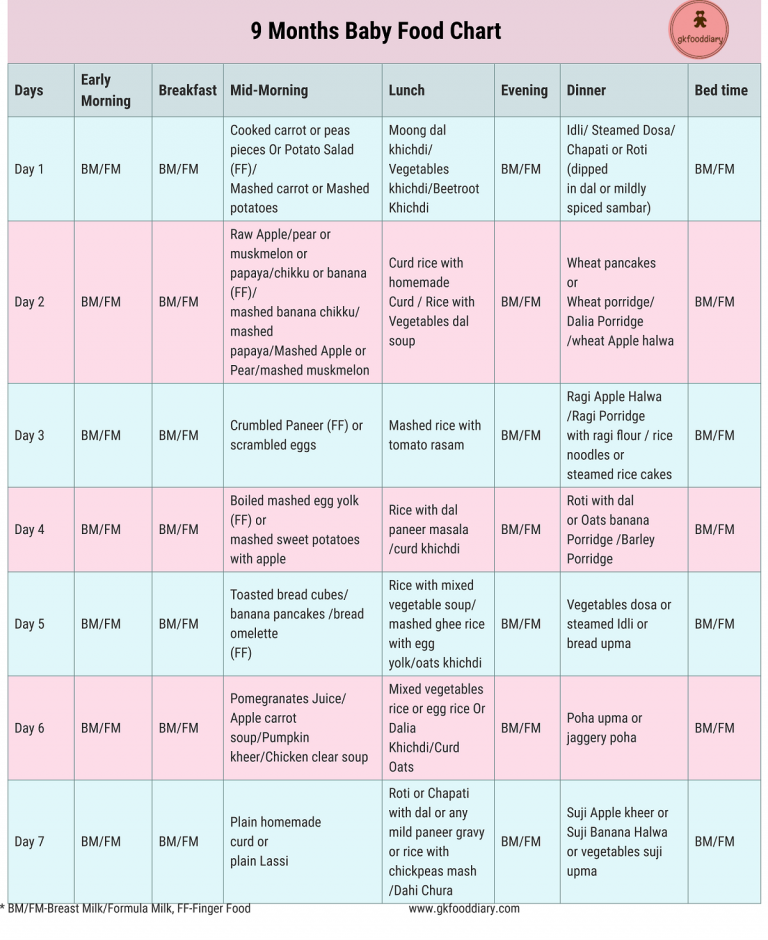
- A 2-year-old toddler’s food requirement does not have to include artificial supplements.
- Indian baby food recipes for a 2-year-old can be spicy. If your child is fussy about this, you can experiment with reducing the amount of seasoning, especially red chilli powder.
- Give your child notice before every mealtime. This gets him thinking about food and builds up an appetite.
- Have the food ready and plated for mealtime when your child arrives.
- Do not punish or reward your child’s eating habits, as it can create a problematic attitude towards food and harm your child’s relationship with food.
- Don’t allow your toddler to watch T.V. during mealtime, as he needs to focus on the food. Talk to him instead and include him in conversations with all the family members.
Disclaimer:
- Look out for allergies. Your child could be allergic to certain nuts, grains or dairy products. Make sure you avoid these food items and consult your doctor about the allergies.

- When introducing your toddler to new foods, you should ensure that you introduce new food one at a time as this will make it easier for you to check for allergies and help you understand your child’s preferences.
- If your child is suffering from diarrhoea, don’t stop feeding him. Consult a doctor and feed him foods that are nutritious and can control the diarrhoea.
- Don’t force-feed your toddler. Toddlers can be fussy with food, be patient and know when he has eaten enough.
Eating nutritious food that is fresh and doesn’t contain preservatives is seen by many as something that takes too much effort, but with the right motivation, it can be a habit and not a chore! Include different fresh fruits in your child’s diets, so his tastes vary and he is less likely to become fussy over time.
Previous Year: 1 Year Old Baby Food Chart
2-5 Years Baby Food Chart
Article
As per the recommended dietary allowances for Indians, a child aged 1–3 years should consume approximately 1,060 kcal/day while those aged 4–6 years should consume approximately 1,350 kcal/day.
11 mins read
Healthy Food Chart & Meal Plan for 2-5 year old Kids
Creating a healthy diet plan for kids is crucial, especially in the years of their growth. With the amount and variety of food out there, ensuring that your kids eat healthy can be quiet a task. A healthy diet plan for kids sets the base for substantial growth. Looking out for your kid, you always want the best for them, and ensuring mental & physical development in the early childhood (2-5 years) phase is important. Hence, a healthy diet chart for 2-5 year old kids helps in supporting their growth & development. While creating a healthy diet chart for 2-5 year old Indian kids, some things are absolutely necessary to be remembered when trying to feed the kids
a) Foods rich in protein and energy are important at this stage like – milk, eggs, peanut butter
b) Creating a relaxed atmosphere during meals encourages eating
c) Kids pallets aren’t highly developed, hence avoid serving highly flavoured and spicy foods
d) Ensure that your kid eats the right amount from each food group for complete nutrition
e) Small portions served at frequent intervals helps
Veg Plan: 2-3 year
Non-Veg Plan: 2-3 Years
Veg Plan: 4-6 year
The above meal plan is suggested for a healthy child above 4 years of age.
Not for use under any medical conditions. Please consult a registered dietitian for more guidance.
Non-Veg Plan: 4-6 year
The above meal plan is suggested for a healthy child above 4 years of age.
Not for use under any medical conditions. Please consult a registered dietitian for more guidance.
FREE SAMPLE
Please fill the form to request for a free sample
Get Sample >
Related articles
Article
প্রীস্কুলার্সদের জন্যে খাবারের পরিকল্পনা
ভারতীয়দের জন্যে সুপারিশ করা ডায়টরী অ্যালাওয়েন্সেস্ অনুযায়ী 1-3 বছর বয়সী এক বাচ্চার আনুমানিক 1,060 kcal/দিন খাওয়া প্রয়োজন এবং 4-6 বছর বয়সী বাচ্চাদের আনুমানিক 1,350 kcal/দিন খাওয়া জরুরী।
Article
A wholesome breakfast can improve your child’s performance at school
Breakfast is the most vital meal of the day. Children who eat breakfast regularly are more likely to have a higher intake of total carbohydrate, dietary fibre, macronutrients
Article
How to Reduce Added Sugar in Your Child's Diet
Children love sweet treats, and we love to reward a child’s good behavior with sugary treats. However, eating high amounts of added sugar can lead to obesity.
However, eating high amounts of added sugar can lead to obesity.
Article
My child strongest
Your little child is growing fast, and during these growth years, your kid needs a healthy diet plan to ensure strength and robust growth and development.
Article
How to ensure your child gets enough Iron?
Iron is an essential mineral required by the body. It is used to synthesise haemoglobin, an essential component of blood cells
Article
Right nutrition for kids
Giving your kid the right kind of nutrition is very essential, especially when your toddler has started to develop food preferences.
Article
How Can I Help My Baby Develop Good Eating Habits?
What are good eating habits? The long-term health and development of your child depends on his/her nutritional habits developed during the early years of life
Article
Strengthening your toddler’s immune system
We tend to be very cautious when it comes to protecting our toddlers from harmful germs in and out of the house, but providing them with the right nutrition is a huge factor in boosting their immun
Article
Healthy Snacks – Why are they important for your child?
Your child is growing by the minute and his or her need for snacks is as important as his meals.
2 year old child's menu with recipes
| Menu author: Natalia Dik — pediatrician. She graduated from the Chelyabinsk Medical Academy, clinical internship and residency, specialty pediatrics. She has been working in her specialty since 2007, from 2005-2008 she has been the head of the Allergy Department of the City Clinical Hospital No. 1 of Chelyabinsk, since 2008 she has been a specialist in clinical trials of drugs. She enjoys cooking and practices the Menu of the Week system in her daily life. |
By the age of two, most babies are able to eat many foods and dishes on their own, there is no need to grind food in a blender or knead with a fork. Rejoicing at such changes, some parents want to give the baby to try more new dishes. Some, on the contrary, are afraid to introduce something new, and they are in no hurry to transfer it to the general table. There is some common sense in both approaches.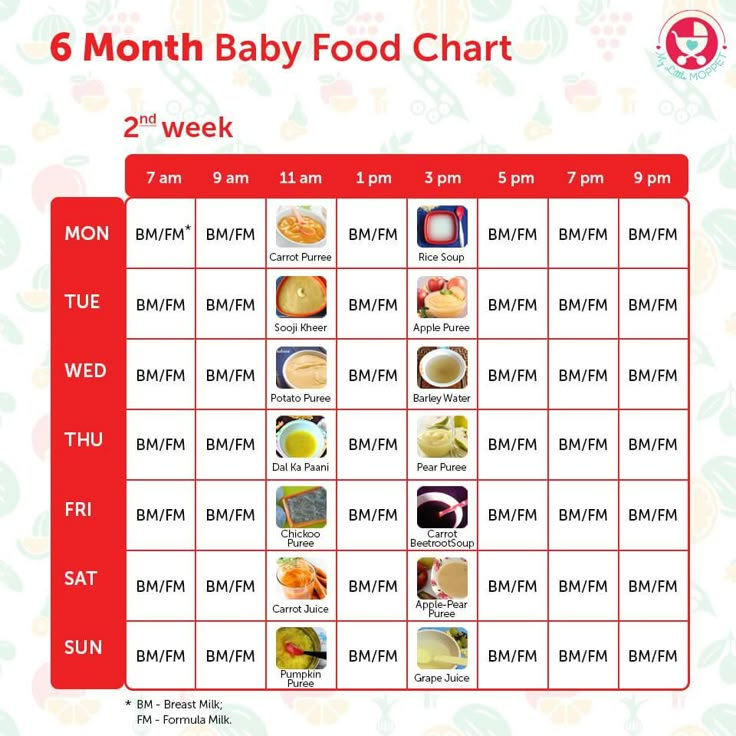 Although the digestive system of a two-year-old baby is already much more mature compared to a one-year-old, nevertheless, it is not yet strong enough. Therefore transition to adult food should be gradual .
Although the digestive system of a two-year-old baby is already much more mature compared to a one-year-old, nevertheless, it is not yet strong enough. Therefore transition to adult food should be gradual .
The sample menu for week below is suitable not only for feeding a two-year-old child, but also for the whole family.
Do not worry if one of the days the child has not eaten all the dishes you have prepared. Our ideas about how much a two-year-old baby should eat often differ from reality in the direction of overestimation. In addition, children may have their own characteristics and preferences. Everything new is best offered in small portions. Often, babies carefully try unfamiliar or otherwise prepared foods, but if they are offered the same dish next time, they can eat it with pleasure.
MONDAY
Breakfast: Porridge made of oatmeal with caramel apples
Lunch: Pumpkin puree soup with chicken+salad “Sunny”
SUPPORT: Smoothies with sheepskin coat
Dinner: stewed vegetables with freaksheels
Pediatrician's comment: As with all ages, it is very important to diversify the diet of children, including different types of foods . Recommended norm of milk and dairy products - up to 600 ml (of which at least 200 ml are fermented milk products), vegetables 300-400g (of which potatoes - no more than 150g), fruits - 130g, meat (red or poultry) - up to 90g per day , bread - up to 90g (of which black - no more than 30g). It is advisable to eat fish 2-3 times a week (weekly norm 175g), eggs - no more than 3 times a week. |
TUESDAY
Breakfast: Kindergarten-style scrambled eggs
Lunch: Borsch-mashed potatoes + Potato casserole with vegetables
Snack: Baked apples with cottage cheese
Dinner:
Pediatrician's comment: Make sure your child drinks enough liquids. |
MEDIUM
Breakfast: Millet porridge with pumpkin in a slow cooker
Lunch: Borscht puree + White cabbage salad with apple
Afternoon snack: Banana smoothie with cookies and nuts
Dinner: Buckwheat porridge + Braised liver
Pediatrician's comment: In the diet of two-year-old children, there should be no such things as fast food (in addition to hamburgers and french fries, these are various chips and store-bought crackers), smoked meats, semi-finished products (sausages, sausages), canned and pickled foods, mushrooms and seafood. |
THURSDAY
Breakfast: Cottage cheese casserole with apples
Lunch: Soup with fish meatballs + Carrots and dried apricots
SUPPLE: yogurt+milk cake
Dinner: Buckwheat
Pediatrician's comment:Of course, it is best to prepare baby food from natural products. If, nevertheless, there is a need to purchase finished products (yogurts, curds, etc.) - be sure to read the information about the composition of on the labels, since at present, even in products intended for baby food, you can often find various flavors, thickeners and preservatives. Manufacturers use many tricks to confuse customers (for example, they write "No preservatives" even if the composition contains citric acid, a powerful preservative). |
FRIDAY
breakfast: Sweet pilaf with dried fruits and nuts
lunch: Soup with fish meatballs + Salad “Vitamin”
SUPPORT: yogurt+milk cake
Dinner: Potato cutlets with turkey and raw
Pediatrician's comment:At the age of two, it is already allowed to introduce a small amount of fried , however, try not to abuse this cooking method, preferring boiling, stewing or baking to it. |
SATURDAY
Breakfast: Cottage cheese casserole with pumpkin in a multicooker
Lunch: Ratatui soup in a multicooker+beetroot salad with prunes and feta
Half -after -day: Kisel from cherry
Dinner: Potato cutlets with turkey and raw
Pediatrician's comment: The diet of children at the age of two remains 5 times a day: three main meals (breakfast, lunch, dinner) and two intermediate ones. |
SUNDAY
Breakfast: Pancakes with carrots Some experts do not recommend introducing sugar and confectionery into the diet until the age of three , or even for life. If you are already giving your child sweets, remember that the daily intake of sugar for a two-year-old child is up to 50g per day, and the less, the better. Health to you and your children! Author: Anastasija Lush, tall, dense and sweetly fragrant! Omelet is a forgotten taste of childhood. I propose to cook it according to kindergarten technology, and at the same time debunk a few myths around this simple, and at the same time difficult dish. I will tell and show the secrets and tricks of making an omelette like in kindergarten. I learned how to make the right omelet from my mother in kindergarten. She has been working in kindergarten for more than 40 years. A medical specialist who draws up a menu for 10-14 days and controls the nutrition of preschoolers. In fact, omelette is a French dish, and it is truly an exam and a test even for the most eminent chefs. ★★★★★ 39 Rate recipe Ingredients : Preparation: Wash and dry chicken eggs, break into a work bowl. Pierce the yolks with a fork and beat lightly until smooth. It is very important to learn: eggs for an omelette are beaten exclusively with a fork. Pour milk over the eggs. Salt and continue beating. It should be said that fanaticism is inappropriate here. Lush foam is not required, but gentle accuracy is even welcome. This is a guarantee that the omelet will not settle at the exit from the oven. Turn on the oven and set the temperature to 200 degrees. Grease an ovenproof dish with butter. Pour the egg-milk mass into it and put in the oven for 10-15 minutes. The oven should already be preheated to 200 degrees. Drizzle the finished omelet with hot melted butter. Cool slightly and cut into serving squares. And now it's time to start talking about myths. Here, on the cut, is the “correct” omelet. If the cooking time is “too much”, then the omelet will be porous on the cut, will give a lot of liquid, and this can be ruthlessly counted as a culinary fakup. The “correct” omelette is homogeneous on the cut. The more holes, the closer to prescription failure. I deliberately returned this portion to the oven in order to “overexpose” and clearly show how the structure of the omelet changes. The number of irregular holes has increased markedly. The height of the omelet itself has also noticeably decreased. If you take into account all the tricks and tricks, it turns out that an omelet is far from being a “standard” dish. A whole art that requires skill, diligence and patience! I also did not immediately come to my “ideal” omelet. But years of training and love for this simple, difficult dish still gave results.
Lunch: Ratatouille soup in a slow cooker + Beetroot salad with prunes and feta
Afternoon snack: Cherry jelly
Fish casserole 10019 Fish casserole1 9000
Pediatrician's comment:  Chocolate and chocolates should be avoided as they stimulate the nervous system of children, often cause allergies and can cause constipation.
Chocolate and chocolates should be avoided as they stimulate the nervous system of children, often cause allergies and can cause constipation. Do you like these recipes?
Kindergarten-style omelet
 For example, in Michelin-starred restaurants in France, any applicant for a chef always passes a culinary test: he is asked to cook scrambled eggs or scrambled eggs.
For example, in Michelin-starred restaurants in France, any applicant for a chef always passes a culinary test: he is asked to cook scrambled eggs or scrambled eggs.
Print
 Even professionals do not use a whisk, much less mixers.
Even professionals do not use a whisk, much less mixers.
 The norm is 2.5-3 cm in height.
The norm is 2.5-3 cm in height.
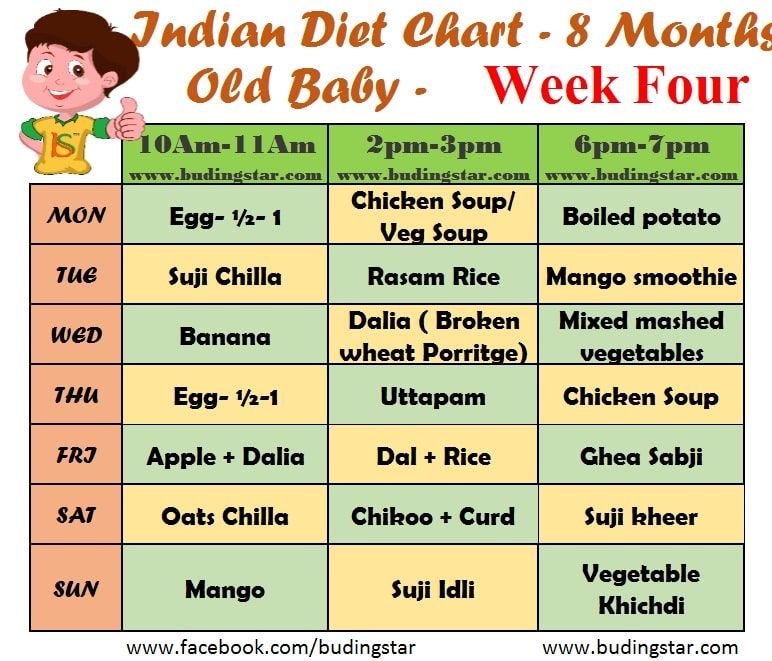 But if the home oven does not hold heat well, then the time can be increased by another 5 minutes so that the omelet grabs.
But if the home oven does not hold heat well, then the time can be increased by another 5 minutes so that the omelet grabs.
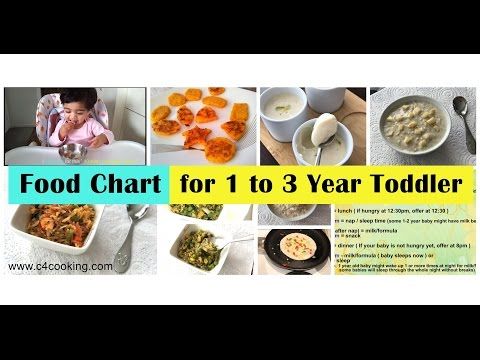

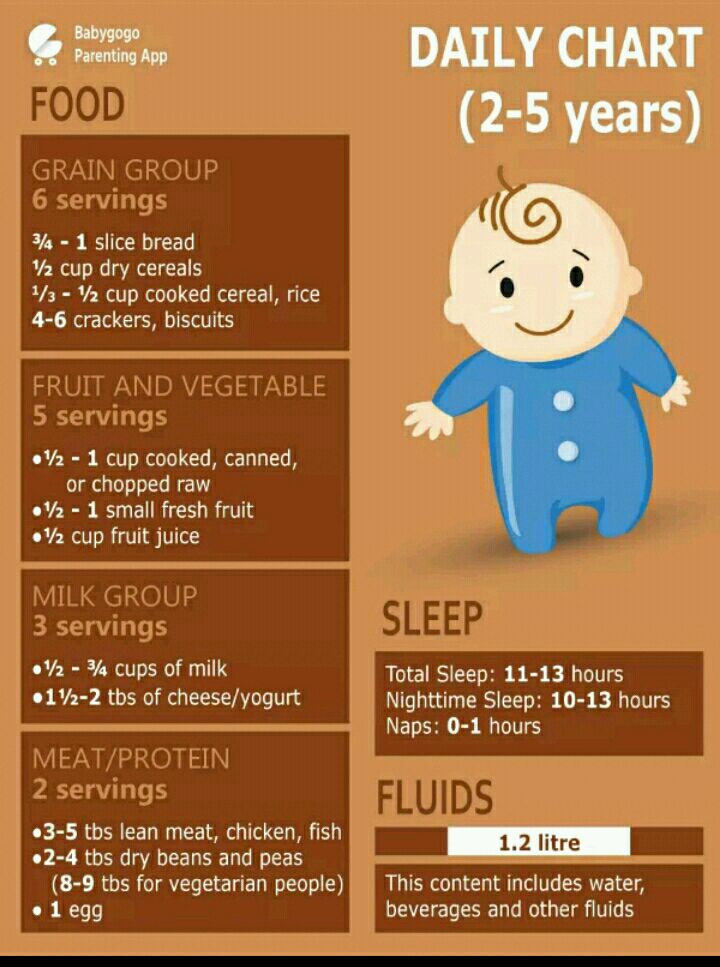 At the same time, vegetables (fresh and cooked), fruits, cereals, milk and dairy products, vegetable and butter should be on the children's menu daily.
At the same time, vegetables (fresh and cooked), fruits, cereals, milk and dairy products, vegetable and butter should be on the children's menu daily.  The norm is 35 ml/kg of water per day ie with a weight of 12 kg your baby should drink 420 ml. It is desirable that it be clean water. If the child refuses it, you can try to give unsweetened compote, herbal tea, but not store-bought juices.
The norm is 35 ml/kg of water per day ie with a weight of 12 kg your baby should drink 420 ml. It is desirable that it be clean water. If the child refuses it, you can try to give unsweetened compote, herbal tea, but not store-bought juices. 

 If the break between the main meals is short, then in between it is enough to give an unsweetened fruit (apple, pear) or a vegetable salad (for example, apple + carrot). If the break is long, you can offer the baby a fermented milk product (yogurt, cottage cheese) with bread or cookies.
If the break between the main meals is short, then in between it is enough to give an unsweetened fruit (apple, pear) or a vegetable salad (for example, apple + carrot). If the break is long, you can offer the baby a fermented milk product (yogurt, cottage cheese) with bread or cookies. 









